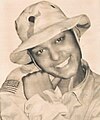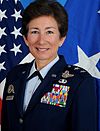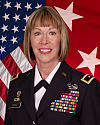The United States Armed Forces are the military forces of the United States. The armed forces consist of six service branches: the Army, Marine Corps, Navy, Air Force, Space Force, and Coast Guard. All six armed services are among the eight uniformed services of the United States, along with the U.S. Public Health Service Commissioned Corps and the NOAA Commissioned Officer Corps.
The United States has eight federal uniformed services that commission officers as defined by Title 10 and subsequently structured and organized by Titles 10, 14, 32, 33, and 42 of the U.S. Code.

Women have been serving in the military since the inception of organized warfare, in both combat and non-combat roles. Their inclusion in combat missions has increased in recent decades, often serving as pilots, mechanics, and infantry officers.

A colonel in the United States Army, Marine Corps, Air Force and Space Force, is the most senior field-grade military officer rank, immediately above the rank of lieutenant colonel and just below the rank of brigadier general. Colonel is equivalent to the naval rank of captain in the other uniformed services. By law, an officer previously required at least 22 years of cumulative service and a minimum of three years as a lieutenant colonel before being promoted to colonel. With the signing of the National Defense Authorization Act of 2019, military services now have the authorization to directly commission new officers up to the rank of colonel. The pay grade for colonel is O-6.
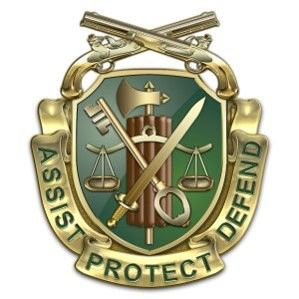
The United States Army Military Police Corps (USAMPC) is the uniformed law enforcement branch of the United States Army. Investigations are conducted by Military Police Investigators under the Provost Marshal General's Office or Special Agents of the Department of the Army Criminal Investigation Division (CID).
This is a brief account of some the Puerto Rican women who have participated in military actions as members of either a political revolutionary movement or of the Armed Forces of the United States.
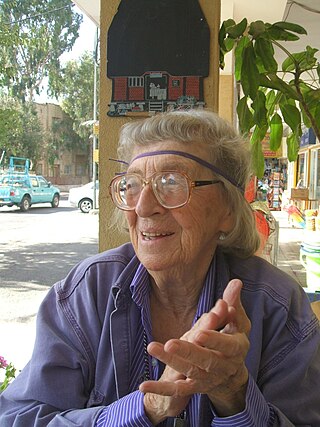
This list is about women in warfare and the military from 1945 to 1999, worldwide.

This article is about women in warfare and the military (2000–present) throughout the world outside the United States. For women in warfare and the military in the United States since 2000, please see: Timeline of women in warfare and the military in the United States, 2000–2010 and Timeline of women in warfare and the military in the United States, 2011–present.

Michelle Janine Howard is a retired United States Navy four-star admiral who last served as the commander of the United States Naval Forces Europe, United States Naval Forces Africa and Allied Joint Force Command Naples. She previously was the 38th Vice Chief of Naval Operations. She assumed her last assignment on June 7, 2016.

The United States Marine Corps (USMC), also referred to as the United States Marines, is the maritime land force service branch of the United States Armed Forces responsible for conducting expeditionary and amphibious operations through combined arms, implementing its own infantry, artillery, aerial, and special operations forces. The U.S. Marine Corps is one of the eight uniformed services of the United States.

Ann Elizabeth Dunwoody is a retired general of the United States Army. She was the first woman in United States military and uniformed service history to achieve a four-star officer rank, receiving her fourth star on November 14, 2008.

The recent history of changes in women's roles includes having women in the military. Every country in the world permits the participation of women in the military, in one form or another. In 2018, only two countries conscripted women and men on the same formal conditions: Norway and Sweden. A few other countries have laws conscripting women into their armed forces, however with some difference such as service exemptions, length of service, and more. Some countries do not have conscription, but men and women may serve on a voluntary basis under equal conditions. Alenka Ermenc was the first female head of armed forces in any of the NATO member states, having served as the Chief of the General Staff of the Slovenian Armed Forces between 2018 and 2020.
This article is about the role played by women in the military in the Americas, particularly in the United States and Canada from the First World War to modern times.
This is a timeline of women in warfare in the United States from 1900 until 1949.

There have been women in the United States Army since the Revolutionary War, and women continue to serve in it today. As of 2020, there were 74,592 total women on active duty in the US Army, with 16,987 serving as officers and 57,605 enlisted. While the Army has the highest number of total active duty members, the ratio of women-men is lower than the US Air Force and the US Navy, with women making up 15.5% of total active duty Army in 2020.

There have long been women in the United States Coast Guard, with Myrtle Hazard becoming the first woman to enlist in 1918, and women continue to serve in it today.

This article lists events involving Women in warfare and the military in the United States since 2011. For the previous decade, see Timeline of women in warfare and the military in the United States, 2000–2010.

In the Indian Armed Forces women are allowed to join mainly in combat service support branches and in non combatant roles. The Indian Air Force had 13.09% female officers in 2018 and 8.50% female officers in 2014; the Indian Navy had 6% female officers in 2018 and 3% female officers in 2014 and the Indian Army had 3.80% female officers in 2018 and 3% female officers in 2014. In 2020, three officers had the rank of lieutenant-general or equivalent, all in the Medical Services. In May 2021, 83 women were inducted as sepoys for the first time in the Indian Army's Corps of Military Police. On 30 March 2023, 273 women were inducted in the Indian Navy as sailos for the first time in the history of the Indian Navy, total 2,585 agniveers passed out after successful completion of training from INS Chilka. The Indian Air Force got airwomen for the first time in its history on 7 March 2024 as 153 female agniveers passed out from the Airmen Training School, Belagavi with 2,127 male agniveers.









